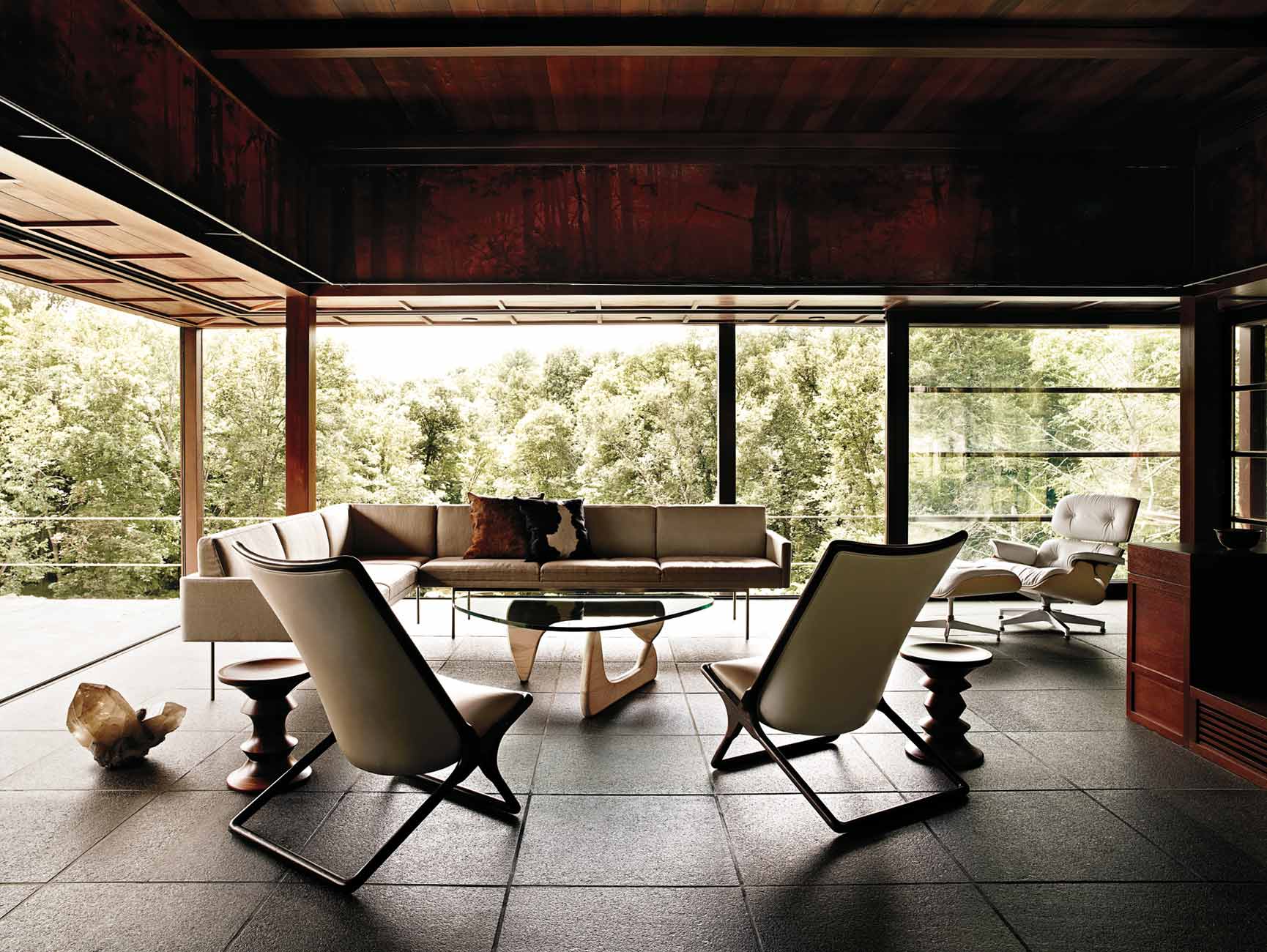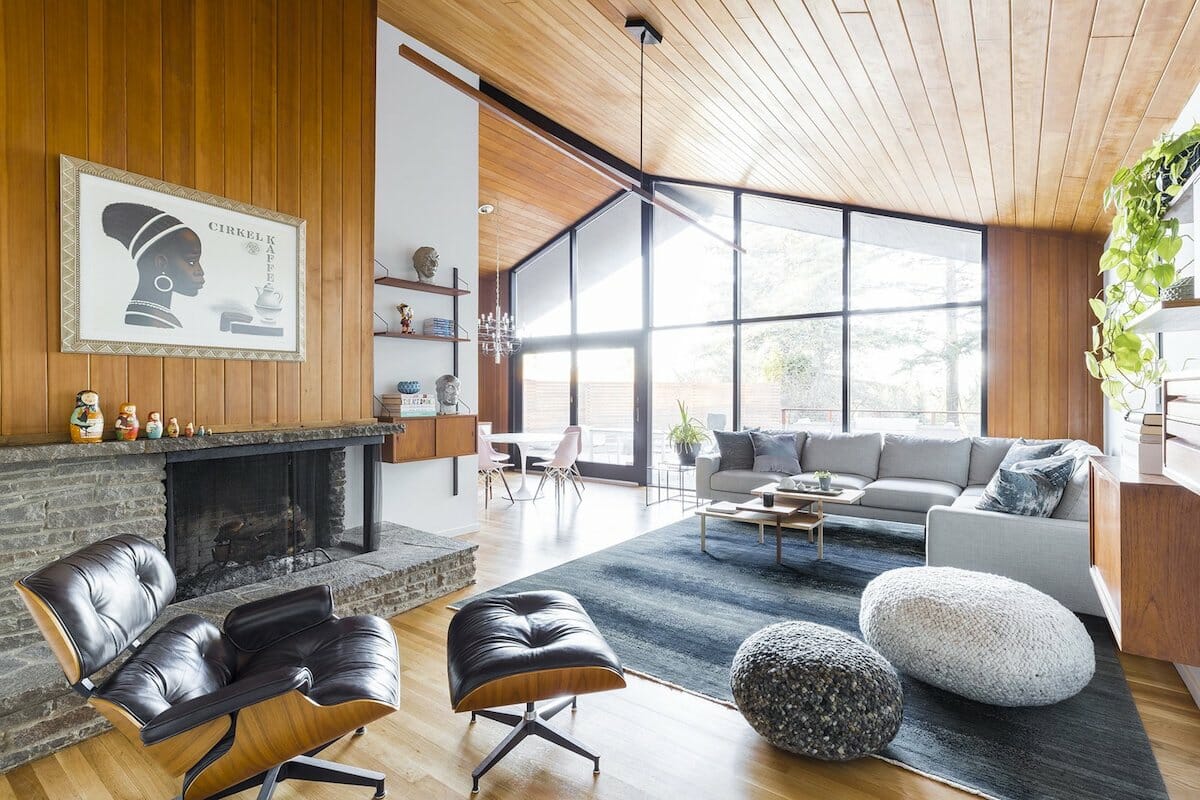Historical Context and Influences: Mid Century Modern Interior Design

Mid century modern interior design – Mid-century modern interior design emerged as a prominent style in the post-World War II era, reflecting a shift in societal values and technological advancements. It drew inspiration from various sources, including:
Bauhaus Influence
The Bauhaus movement, with its emphasis on functionalism and simplicity, played a significant role in shaping mid-century modern design. Its principles of using clean lines, geometric forms, and innovative materials laid the groundwork for the style’s aesthetic.
Mid-century modern interior design, characterized by its clean lines, organic shapes, and emphasis on functionality, has left a lasting impact on the world of interior design. This style seamlessly translates into modern office design, where the focus on efficiency and comfort remains paramount.
Modern office design embraces the principles of mid-century modernism, creating workspaces that are both aesthetically pleasing and conducive to productivity. The result is a harmonious blend of style and functionality that reflects the evolving needs of the modern workplace.
International Style, Mid century modern interior design
The International Style, characterized by its emphasis on open floor plans, large windows, and the use of steel and glass, also influenced mid-century modern design. This style prioritized functionality, natural light, and a connection to the outdoors.
Socio-Cultural Factors
Post-war optimism and a desire for a fresh start contributed to the popularity of mid-century modern design. People embraced the style’s clean lines and uncluttered spaces as a reflection of their hopes for a brighter future.
Defining Characteristics and Elements

Mid-century modern interiors are defined by their clean lines, geometric shapes, and use of natural materials. The style is characterized by a focus on functionality and simplicity, with an emphasis on creating open and airy spaces.
Typical furniture used in mid-century modern interiors includes sofas, chairs, and tables with simple lines and geometric shapes. The furniture is often made of wood, metal, or glass, and is often upholstered in neutral colors. Lighting fixtures in mid-century modern interiors are often simple and geometric in shape, and are often made of metal or glass.
Materials, Colors, and Patterns
Mid-century modern interiors often use natural materials such as wood, stone, and glass. The colors used in mid-century modern interiors are often neutral, with a focus on earth tones and pastels. Patterns used in mid-century modern interiors are often geometric or organic in nature.
Contemporary Applications and Trends

Mid-century modern design has experienced a resurgence in popularity in recent years, as homeowners and designers seek to incorporate its timeless style into their contemporary interiors. This revival has led to several key trends and reinterpretations of the style.
One notable trend is the use of mid-century modern elements in eclectic interiors. By combining mid-century pieces with furniture and décor from other styles, designers can create unique and personalized spaces that reflect their own tastes and personalities. Another trend is the use of mid-century modern furniture in outdoor spaces. With its clean lines and durable materials, mid-century modern furniture is well-suited for use on patios, decks, and other outdoor areas.
Incorporating Mid-Century Modern Elements into Contemporary Interiors
There are many ways to incorporate mid-century modern elements into contemporary interiors. One simple way is to add a few key pieces of mid-century modern furniture to an existing room. This could include a classic Eames lounge chair, a Noguchi coffee table, or a Saarinen tulip table. Another way to add mid-century modern style to a room is to use mid-century modern-inspired fabrics and patterns. These fabrics and patterns can be used on upholstery, curtains, or even wallpaper. Finally, mid-century modern lighting can also be used to add a touch of style to a contemporary interior. Mid-century modern lighting fixtures often feature clean lines and geometric shapes, and they can be used to create a variety of different looks.
Mid-century modern interior design, known for its clean lines and organic forms, extends its influence beyond indoor spaces. Outdoor patio decor embraces this aesthetic, incorporating sleek furniture, geometric patterns, and natural materials. From cozy lounge chairs to sculptural planters, outdoor patio decor complements mid-century modern interiors, creating a cohesive and stylish outdoor oasis.